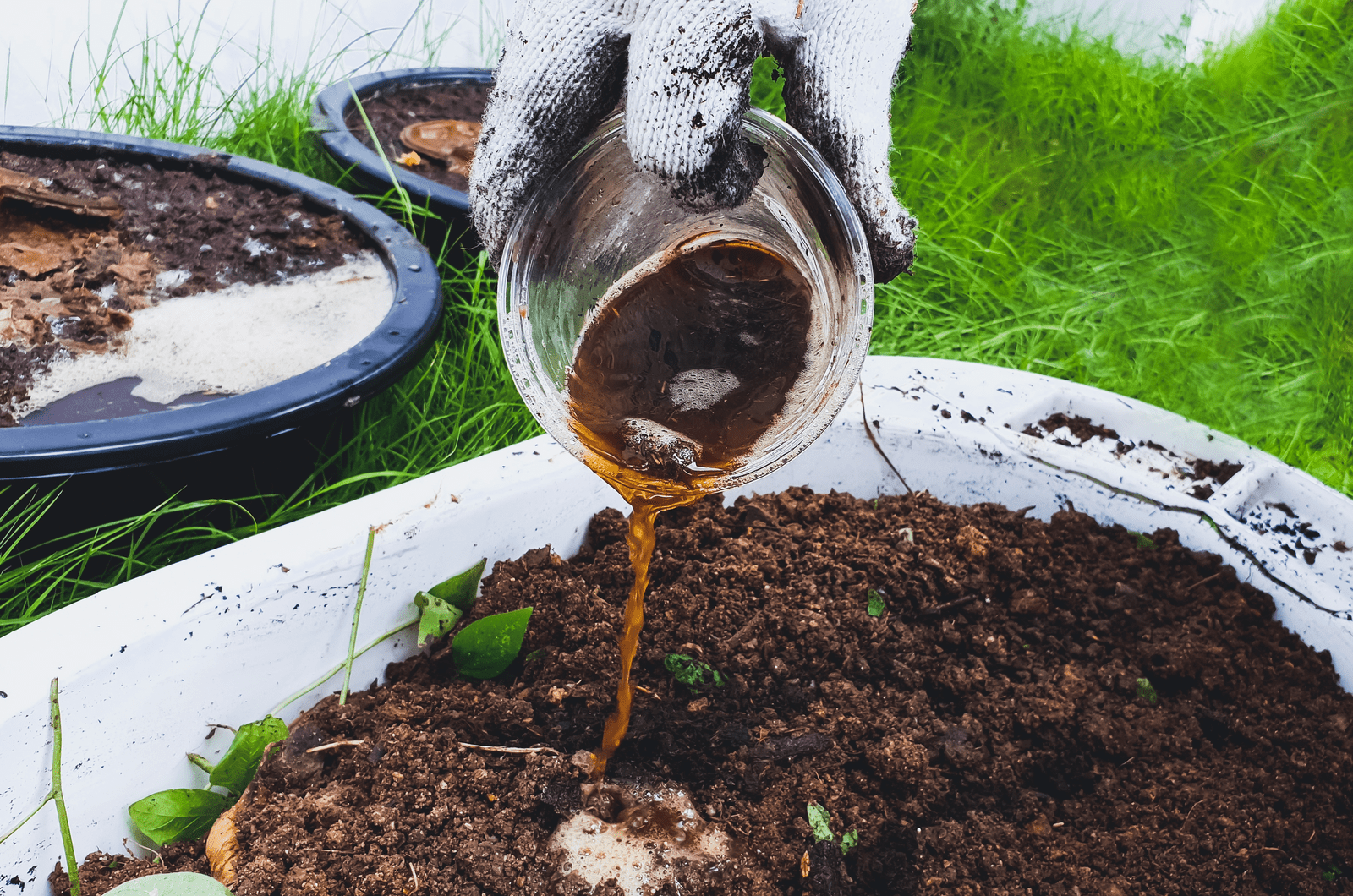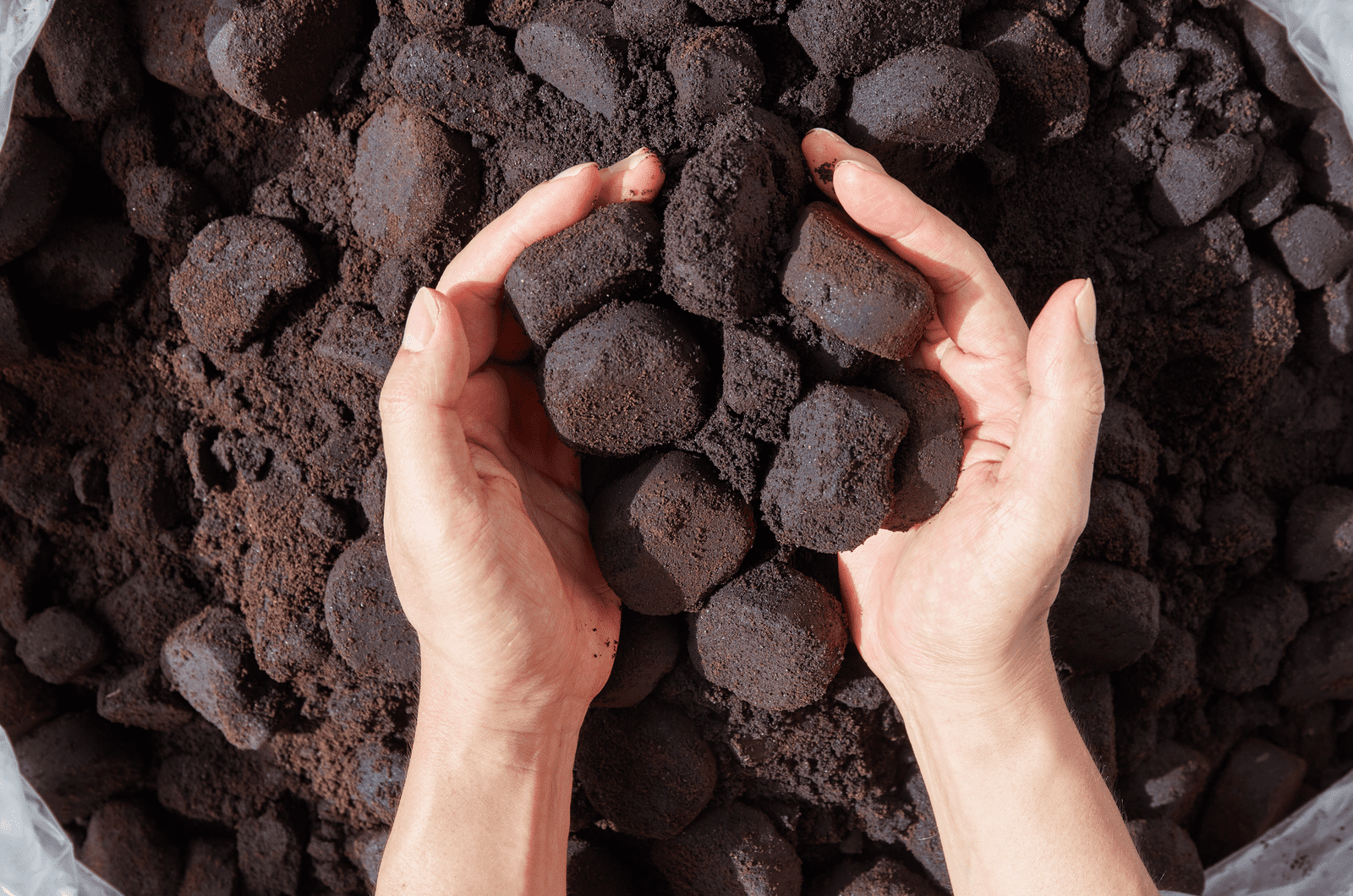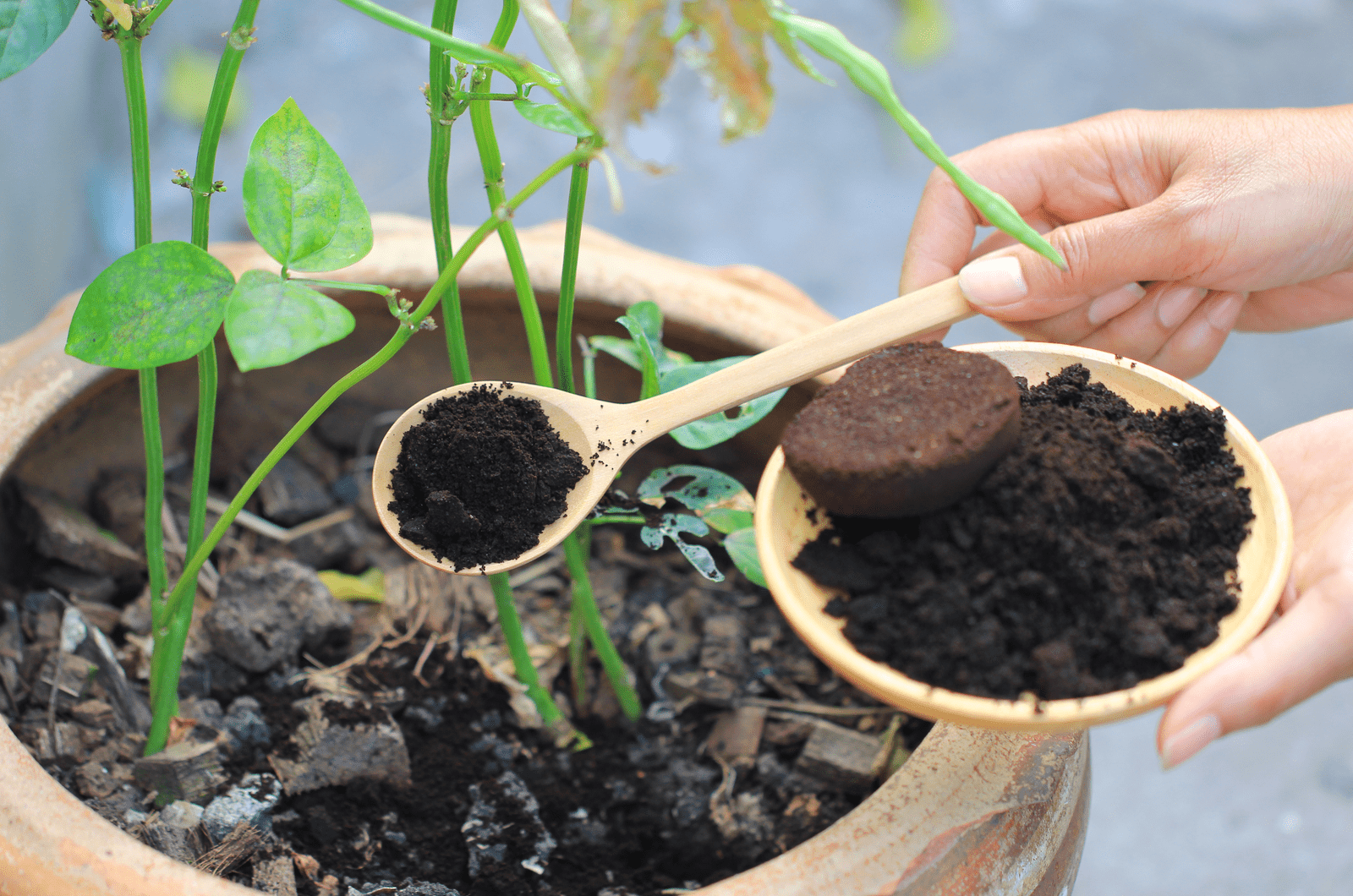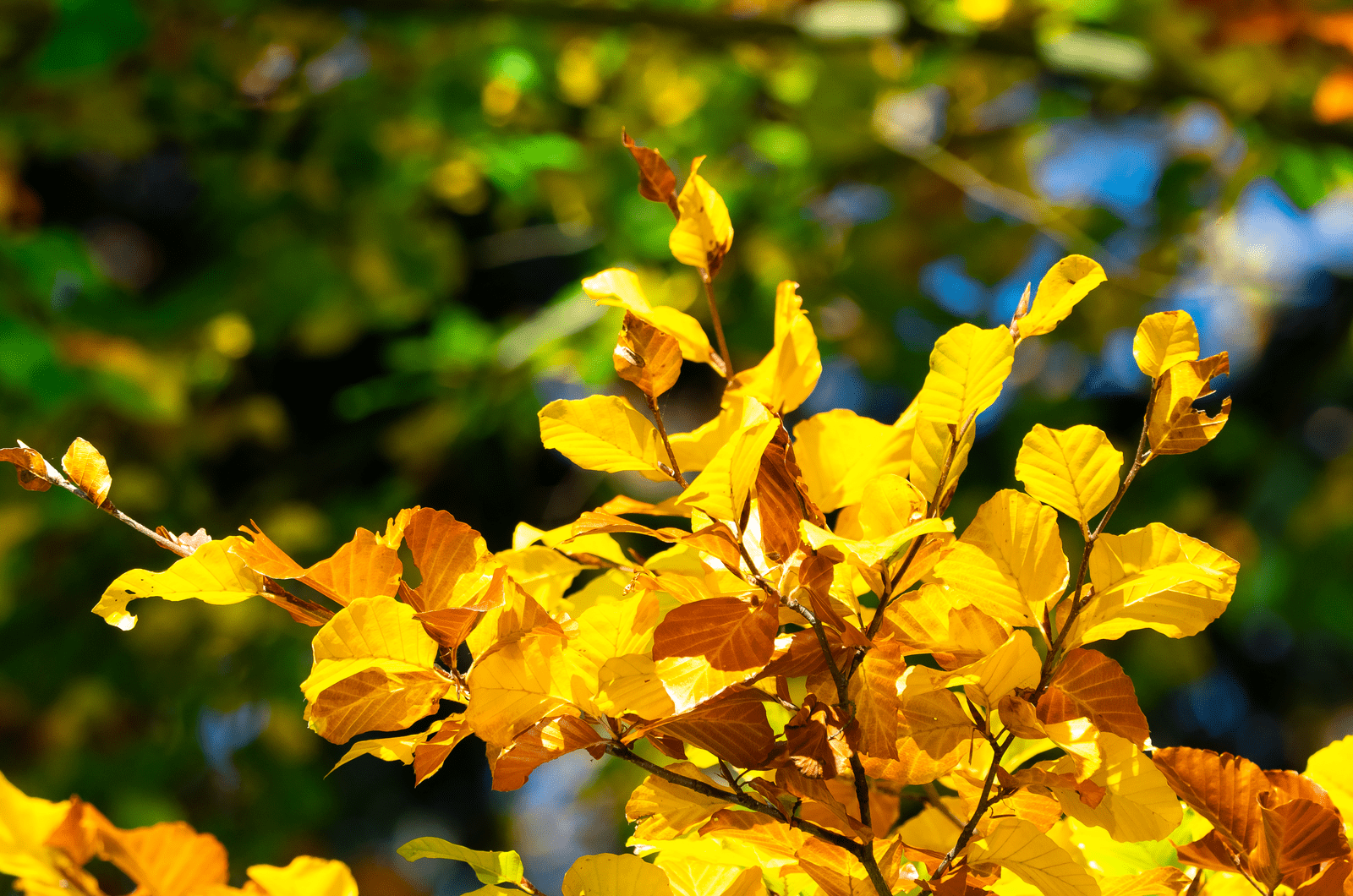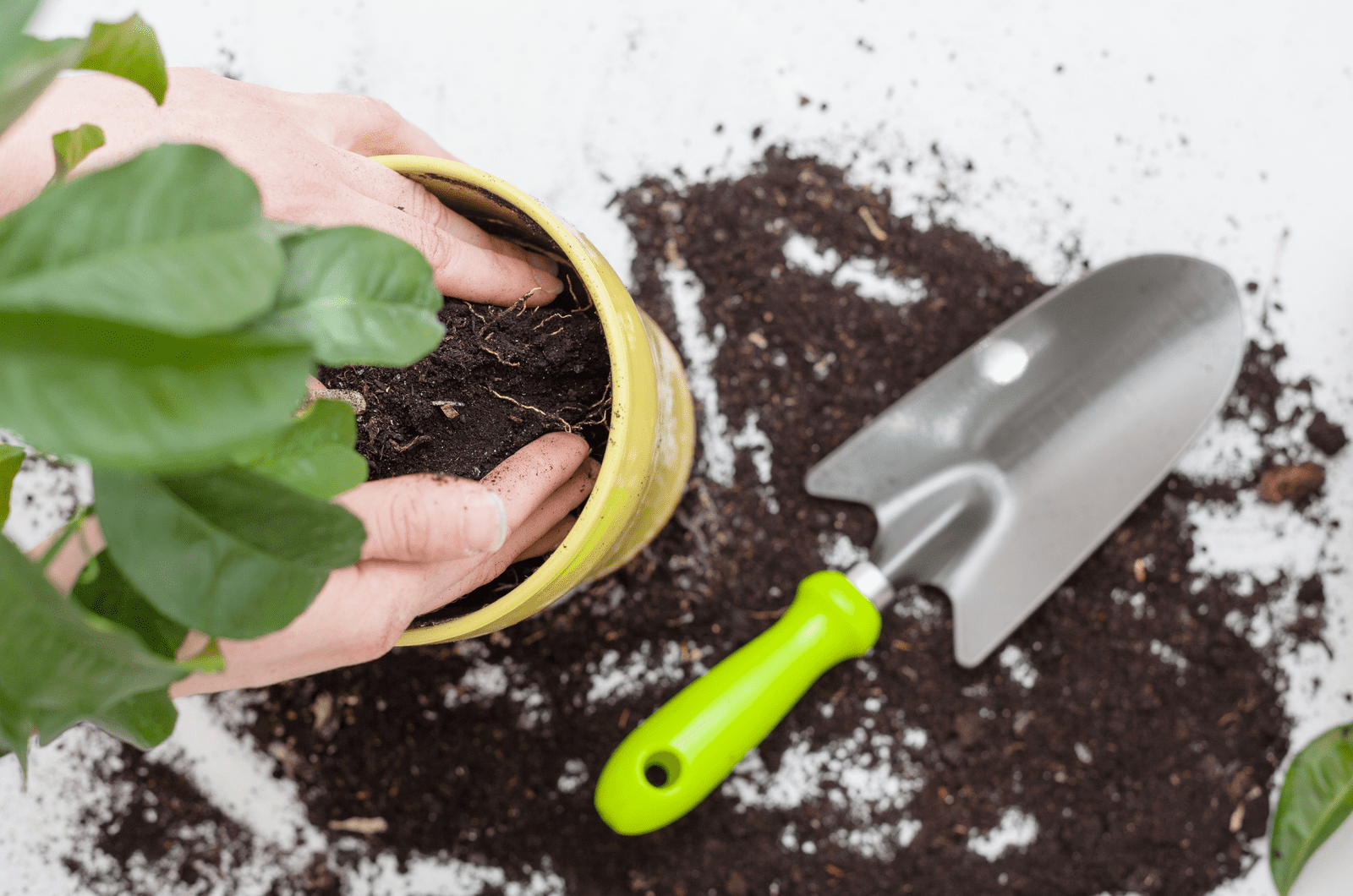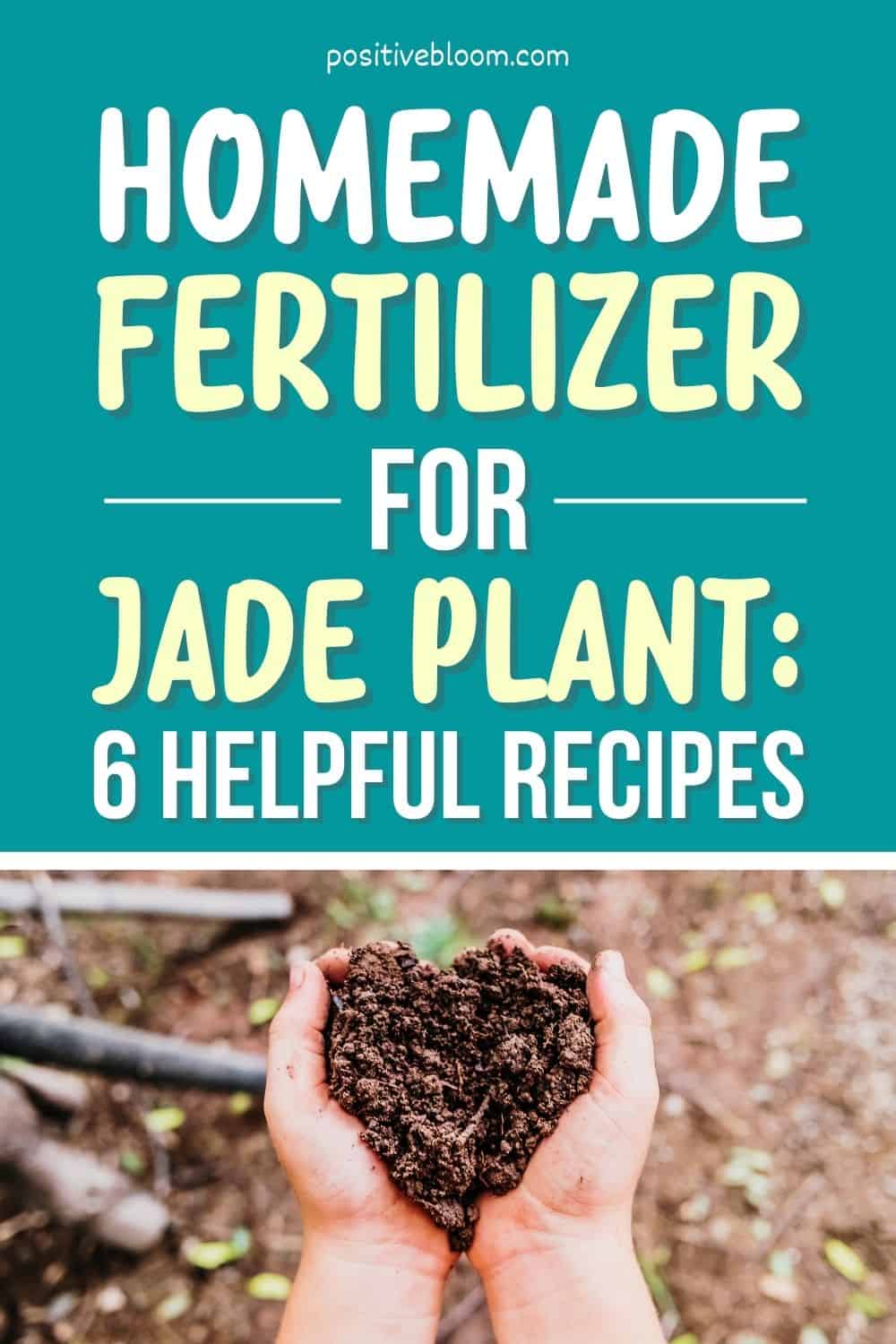Positive Bloom is an Amazon Associate and we earn from qualifying purchases through these links at no extra cost to you.
There are many plants ideal for beginners, and the jade plant is one of them. This houseplant requires very little care, so it’s a great way to dip your toe into gardening and plant collecting.
However, every succulent, aroid, and cactus, requires some plant food, which is why we decided to present you with some great recipes for homemade fertilizer for jade plant.
The good news is that you can recycle scraps and food waste, so don’t throw away any coffee grounds, eggshells, or banana peels.
Let’s look into some general specifics about jade plants before we continue:
[table id=197 /]Read on to learn some helpful tips about the best fertilizers for jade plants, how and when to feed them, what to do if you over-fertilize them, and this plant’s basic requirements.
How To Make Homemade Fertilizer For Jade Plant
There are many different varieties of homemade fertilizers, and in this section, we will show you our top six that have the NPK ratio your jade plants need to thrive.
Different types of fertilizers have various benefits, and you can check out the sections below to find the one most suitable for your plant.
1. Coffee Ground Fertilizer
Coffee ground fertilizer is quite easy to make and use, but you have to be careful as it is acidic and may mess with the soil balance. However, jade plants do love slightly acidic soils, so this fertilizer is ideal for them.
You can use coffee grounds in two different ways. The first way is much simpler; you just have to sprinkle the soil with some dry coffee grounds.
The second option is to make liquid fertilizers, which doesn’t mean brewing coffee, sadly. You have to dilute it first because coffee is way too acidic and may damage your plant. Making this fertilizer is not rocket science, though, as you simply have to mix equal amounts of water and coffee.
Sunflowers also like coffee grounds, so you can make a larger batch of this feeding liquid and use it for those too.
Coffee grounds have many benefits, so it’s no wonder plants love them. They improve drainage and aeration, add organic matter, and even help beneficial microbes thrive.
2. Green Tea Fertilizer
I never thought of plants as caffeine lovers, but a pattern is beginning to emerge now! This indoor plant is quite fond of green tea fertilizer.
However, you do have to dilute it a lot, so put just two tea bags in a gallon of water for this recipe. Cover the bucket with something and leave the bags in the water for 3-4 days.
Remove the tea bags and use them when your plant needs a boost.
Green tea provides essential nutrients to your plants, such as phosphorus, potassium, magnesium, and calcium. You can also add tea leaves to the soil, and as they don’t break down immediately, you’ll have a homemade slow-release fertilizer to provide your jade with proper care!
3. Banana Fertilizer
Another thing that you can recycle instead of throwing away are banana peels, and making this fertilizer is as easy as the previous two.
First, decide on the amount of fertilizer you need, and then fill either half a glass or a bucket with water. After that, submerge the peels and ensure that the water level is slightly above the bananas so they don’t get moldy. Now you have to leave the banana peels in direct sunlight for 1-2 weeks, and then use the resulting fertilizer as needed.
You can also make a slow-release fertilizer, but for this method, you have to ensure the peels are dehydrated. You can just leave them out in the open air and in direct sunlight to achieve this.
Once the banana peels are all black and crispy, grind them and add them to the soil.
Here is a video with some great tips for making banana fertilizer:
Lastly, banana peels are extremely rich in phosphorus and potassium, but lack nitrogen, so ensure you add some of it if you only use this fertilizer. However, phosphorus and potassium ensure that your plant has a strong root system and is good for overall health, which makes this fertilizer a great choice.
Banana peels also contain micronutrients such as calcium and magnesium, which neutralize organic acids that form as the plant’s metabolism works. Calcium also improves nutrient uptake and their transference within the plant.
4. Eggshell Fertilizer
Eggshells are extremely rich in calcium, which is responsible for producing plant tissue and plant growth. Eggshells also help keep pests at bay and play an important role in plant root growth.
However, they do lower soil acidity, so be careful with the amount and frequency you use.
Our recipe for eggshell fertilizer is quite simple:
Collect as many eggshells as you can and clean them. The next step is to dry them, and you can do this either outside in the open air in direct sunlight or in the oven.
Once the eggshells are completely dry, grind them in a blender or pestle and mortar and store them for future use. When you feel your jade needs more nutrients, you can simply sprinkle some of this plant fertilizer on the soil and gently mix it together.
You don‘t have to grind the eggs into powder if it makes it more difficult for you to determine the correct dosage, you can simply crush them a bit and work them into the soil.
It takes approximately six months for larger shells to decompose and for you to see results, but it’s an excellent choice if your houseplant isn’t desperately hungry for food.
5. Epsom Salt Fertilizer
Adding Epsom salt to your plant‘s soil mix has its benefits and is incredibly easy to make. This salt has magnesium content, which is believed to strengthen plant cell walls, provide more energy, and boost seed germination.
The good news is that Epsom salt is highly water-soluble, and the entire process of making this fertilizer takes just a few minutes.
Just dissolve two tablespoons of Epsom salt in a gallon of water and water your plant with it.
However, this fertilizer doesn’t provide the necessary macronutrients such as nitrogen, phosphorous, and potassium, so you’ll have to find additional ways of getting these minerals to your jade plant.
6. Fish Tank Water Fertilizer
The Jade plant is one of the money plants that bring good fortune, so it’s not surprising that we use anything we can get our hands on to help it thrive.
So, if you have an aquarium at home, don’t throw away the dirty water because it is filled with minerals such as nitrogen, phosphorus, and potassium, and it’s a shame for it to go to waste.
It is incredibly easy to use, you just have to water your plant with it or dilute it in freshwater.
Can You Use These Fertilizers For Other Plants?
These homemade fertilizers aren’t suitable just for your jade plant; you can use them for other houseplants and even vegetables.
Banana fertilizers, for instance, are excellent for plants that need more potassium, such as flowers, tomatoes, and peppers. Bananas, just like eggshells, contain calcium, which prevents blossom-end rot.
You already know that coffee grounds are ideal for your jade plant and sunflowers, but there are many other plants, vines, and veggies that love the acidic aftertaste of coffee. Blueberries, snake plants, roses, azaleas, carrots, cabbage, and radishes also benefit from this fertilizer, so there are lots of ways to use these wonderful home recipes elsewhere in your garden.
Green tea is another reusable fertilizer ideal for other potted plants such as African violets, ferns, Christmas cactus, etc.
Eggshell fertilizer is ideal for all calcium-loving plants such as eggplants, tomatoes, peppers, spinach, amaranth, cauliflower, broccoli, etc.
Epsom salt is rich in magnesium, and some plants that benefit from this mineral are tomatoes, peppers, and roses. They can easily take it up once it’s diluted in water, and you can even apply it directly to their leaves.
When Is The Best Time To Fertilize Jade Plants?
In the following section, you will find some great tips on fertilizing your jade plant. However, the most important thing you need to keep in mind is to fertilize your green buddy only during its growing season because you don’t want to risk overfertilization.
Of course, the amount and frequency differ depending on the fertilizer, but generally, you should feed your plant approximately 2-3 times a year.
However, there are also some signs that your jade plant is in need of additional nutrients, and we’ll examine them more closely now.
3 Signs That A Jade Plant Needs Fertilizer
Jade plant care involves fertilizing your friend from time to time, and if it’s not happy it will display its dissatisfaction on its leaves, stems, and overall appearance.
There are three main signs that this plant needs more fertilizer, and if you notice yellow leaves, weak roots and stems, and droopy and leggy growth, you should consider fertilizing your jade.
However, always check the soil and lighting conditions first, as these symptoms can also be signs of overwatering, underwatering, and sunburn.
The jade plant should always be fertilized during its growing season, which is throughout spring and summer. You shouldn’t feed it in winter because that’s when it enters dormancy and cannot use the nutrients you give it, so you’ll only risk burning it.
1. Yellow Leaves
Yellow leaves can indicate a lot of things, and they are usually accompanied by droopy and wilted foliage. Many things can cause this unsightly state, from inadequate watering and coldness to either too much or too little sunlight.
However, if none of these things seem to be the problem, then you’re probably dealing with a nutrient deficiency in the soil. All leafy plants need magnesium to help with chlorophyll production, and without chlorophyll, your jade plant cannot photosynthesize and produce the energy and food it needs to thrive.
That’s why you mustn’t forget to add some fertilizer to the potting mix the next time you notice this issue.
Also, your jade plant leaves won’t suddenly turn back to green after you fertilize them, but if you don’t want to look at the unattractive leaves, you can cut them off and enjoy your plant.
2. Weak Roots And Stems
Sometimes the stems and roots may be weak and unable to support the weight of the foliage and plant, and even though there are many things that might cause this, one of the problems could be a lack of nutrients.
Remember to fertilize your plant frequently, and if you use minimal amounts diluted to more than quarter-strength, you should feed your plant more often.
If you notice during repotting that the plant’s roots are weak, it means it’s not getting enough phosphorus, so you should switch to a high phosphorus fertilizer for the time being. Don’t use it for too long, though, because nitrogen and potassium deficiency lead to more problems.
You can also check up on your plant and monitor it by trying to uproot it (just don’t tug too violently as you don’t want to break it). If the plant’s stems feel weak and loose, it’s highly likely that the roots are suffering as well.
3. Legginess, Droopiness, And Stunted Growth
The Jade plant is on the list of tall succulents, but its growth can be stunted, leggy, or droopy. These symptoms are caused by insufficient nutrients in the soil.
However, these same symptoms may also indicate that your plant is not receiving enough sunlight or that the humidity and temperature aren’t optimal, so always check for these things before fertilizing your plant.
You don’t want to over-fertilize this succulent plant and end up with even more problems!
How To Fertilize A Jade Plant
Thankfully, jade plants aren’t heavy feeders and don’t grow too fast, so you can use granules of slow-release fertilizer at the beginning of this plant’s growing season or when repotting it.
However, the easiest method is to use liquid fertilizers diluted to quarter strength to avoid overfertilization.
You must never forget to water your plant before fertilizing because pure fertilizer can burn your plant’s roots and destroy it.
The jade plant adores high nitrogen fertilizers, but they need other macronutrients as well. Using a formula like 10-20-10 is ideal because it offers the perfect ratio of all the minerals this indoor plant needs.
You can add fertilizer once in spring and then again in the late summer and be done with all of it. However, if you keep your plant in a sunny spot you should fertilize it more as it uses the nutrients faster. In that case, you should feed your plant every other month.
What Is The Best Fertilizer For The Jade Plant?
You can use either organic or chemical fertilizers for your jade plant, it’s just a matter of preference and your plant’s needs.
Organic fertilizers are the safest option as you don’t have to be too careful about the amount you use. Overfertilization causes jade plants to drop their leaves, and you’ll avoid it by using organic fertilizers.
The most common ones are manure and worm castings, but you can also find great deals on Amazon. Here’s the one we use:
However, there are also amazing chemical fertilizers that can give your jade plant a new lease of life. One such fertilizer is Miracle-gro for succulents, and you can find a link to place your online order below:
How To Save A Jade Plant From Overfertilization
If you’ve accidentally overfertilized your plant, don’t despair; there are things you can do to save it!
Firstly, you should trim all the yellow, droopy, and wilted foliage so your plant can redirect energy into producing new and healthy leaves.
After that, there are two things you can do: water flushing or repotting. If you have recently repotted your plant and don’t want to disturb it again (and your plant would hate it anyway), you should turn to water flushing.
Simply put your potted plant in a sink or a tub and either put it under slowly running water or slowly pour the water yourself. You should always use four times the water of the pot’s volume to flush the soil.
After you’re all done, leave the substrate to drain and dry for a few hours before moving it to its final location.
There’s another thing you can do to help your jade plant, but it takes a lot of time. You can propagate it by using the healthiest leaves you can find to get yourself a brand new plant.
Here are some tips on jade plant propagation:
The Jade Plant’s Other Needs
Even though this plant is quite easy to care for, you still have to put in some effort if you want it to be healthy. The bare minimum, apart from fertilization, is to keep it in a sunny spot and arrange a regular watering schedule.
You can find more about the jade plant’s needs in the section below.
Lighting
Like many other succulents, the jade plant requires plenty of sunlight. Keep it somewhere it can get at least six hours of light per day.
We prefer keeping all our succulents on east-facing windows, but south or west-facing windows work just fine. However, the afternoon sun can get a bit harsh, especially in the summer, so you should place them a few feet away from the windows to avoid sunburn.
Watering
Even though this is a succulent, it requires regular watering. You won’t believe what an underwatered aloe vera looks like, and an underwatered jade isn’t that much different.
You should water this plant twice a month or every three weeks depending on the temperature and humidity level.
The jade plant requires more water if the temperatures are higher and it is exposed to more light, so keep this in mind as well. That said, you shouldn’t completely stop watering this houseplant in winter, just reduce it.
You can always check the soil if you’re unsure whether to irrigate your plant or not. If the soil is mostly dry, you can water your jade.
Another thing that can help you decide whether your plant requires a good soak is its foliage. The Jade plant’s leaves should always be plump and fleshy, so if they look thin and wilted that’s your cue to water your houseplant.
Climate And Temperature
Believe it or not, the jade plant is one of those succulents that like humidity. Of course, it does prefer arid climates, but it can thrive in moderate humidity levels up to 50%.
Therefore, you don’t have to get a dehumidifier or move your plant away from its friends. And even if you get carried away and mist it leaves sometimes, it won’t hold it against you. (Just don’t do it too often!)
When it comes to temperature, the jade plant prefers warm weather and thrives in day temperatures between 65-75°F (18-24°C).
However, this plant also likes to cool down, especially when it’s not that active at night and in winter. During these resting periods, the jade plant’s preferred temperature is between 50-55°F (10-13°C).
Soil
The last thing you need to pay attention to when nurturing jade plants is the growing medium in which you plant them. Potting soil is not the best option because it doesn’t drain like this plant needs it to, which is why you should get succulent potting mix.
However, you can always mix 1/4 perlite, 1/4 sand, and 2/4 peat moss to get the desired drainage, water retention, and nutrient-rich content.
FAQ
There are many unanswered questions about jade plants; unfortunately, we cannot tackle them all.
However, we singled out the most common ones and decided to talk more about jade plant care in Q&A form.
Let’s start!
How do I make my jade plant stronger?
There’s not a quick (or single) solution to making your jade plant stronger, but there are things such as pruning, repotting, supporting the plant’s core, and tending to its basic lighting, watering, and fertilization needs.
The first thing you should do is inspect your plant and remove all the leggy stems because they are probably too heavy for the plant’s trunk to support. Prune these stems as close to the stalk as possible.
Don’t forget to repot your jade plant every 2-3 years as it can get pot bound, even though it is a slow grower.
This might not be something you’re used to, but staking jade plants can be quite beneficial, make them a lot stronger, and help them bear their weight. Simply put a lovely trellis (or a rod, as almost anything works) in the middle of the pot and fix your plant to it with some twist ties.
Finally, ensure that you regularly water and fertilize your plant and keep it in a place it can get plenty of sunlight.
Is baking soda good for jade plants?
Generally, you shouldn’t use baking soda to water or fertilize your jade plant, but you can use it to get rid of powdery mildew.
Simply mix 1/3 water, 1/3 vinegar, and 1/3 soda, mix it well, and spray some on the infected leaves. However, don’t soak them because that’s what causes mildew in the first place.
Let the leaves dry, and if it takes more than a couple of hours you can use a clean cloth to dry them yourself.
What can I do to make my jade plant grow faster?
If you want to speed up your jade plant’s growth, you should keep it in moderate temperatures between 65-75°F (18-24°C), fertilize it at least twice a year, water it regularly, keep it in a bright spot, and repot it.
Repotting promotes faster growth as the plant doesn’t get root-bound, and fertilizing gives your plant an extra boost. However, you shouldn’t overdo it with either of the tips above because it can have the opposite effect and slow down your plant’s growth.
To Sum Up
We wanted to show you that you don’t have to rely on nurseries and shops for everything, and that you can make your own homemade fertilizer for jade plant.
We brought six of our favorite recipes to try out so you can find the ones that work best for your plant. Also, these fertilizers aren’t strictly made for jade plants, and many other houseplants and vegetables can use them too!
We included some guidelines about when and how to fertilize jade plants, the best fertilizers for your indoor friend, and some tips and tricks for saving your plant from overfertilization.
Finally, we included a short care guide for jade plants and answered some of your most frequently asked questions.
We hope you liked reading it as much as we liked writing it, until next time!
Like this post? Share or pin it for later!

